-
 Bitcoin
Bitcoin $115300
-2.49% -
 Ethereum
Ethereum $3692
-3.87% -
 XRP
XRP $2.984
-4.58% -
 Tether USDt
Tether USDt $0.9999
0.00% -
 BNB
BNB $787.2
-1.20% -
 Solana
Solana $170.2
-5.34% -
 USDC
USDC $0.9998
0.00% -
 Dogecoin
Dogecoin $0.2078
-6.39% -
 TRON
TRON $0.3260
-0.36% -
 Cardano
Cardano $0.7309
-5.54% -
 Hyperliquid
Hyperliquid $41.34
-3.01% -
 Stellar
Stellar $0.3949
-4.34% -
 Sui
Sui $3.553
-6.65% -
 Chainlink
Chainlink $16.83
-5.61% -
 Bitcoin Cash
Bitcoin Cash $560.6
-4.21% -
 Hedera
Hedera $0.2495
-4.52% -
 Avalanche
Avalanche $22.32
-4.77% -
 Ethena USDe
Ethena USDe $1.001
-0.02% -
 Toncoin
Toncoin $3.488
2.00% -
 UNUS SED LEO
UNUS SED LEO $8.948
0.11% -
 Litecoin
Litecoin $105.8
-4.58% -
 Shiba Inu
Shiba Inu $0.00001234
-5.03% -
 Polkadot
Polkadot $3.666
-4.57% -
 Uniswap
Uniswap $9.345
-8.18% -
 Monero
Monero $306.8
-1.86% -
 Dai
Dai $1.000
0.00% -
 Bitget Token
Bitget Token $4.379
-3.52% -
 Cronos
Cronos $0.1395
-5.68% -
 Pepe
Pepe $0.00001070
-6.53% -
 Aave
Aave $259.7
-6.67%
How does the WMA indicator perform in a bearish crypto market?
The Weighted Moving Average (WMA) helps crypto traders spot bearish trends early by giving more weight to recent prices, making it ideal for volatile markets.
Jul 30, 2025 at 07:50 pm

Understanding the WMA Indicator in Cryptocurrency Trading
The Weighted Moving Average (WMA) is a technical analysis tool widely used in the cryptocurrency market to identify trends and potential reversal points. Unlike the Simple Moving Average (SMA), which assigns equal weight to all data points, the WMA gives greater importance to recent price data, making it more responsive to new information. This characteristic becomes especially relevant in volatile markets like crypto, where rapid price swings are common. In a bearish environment, the WMA can help traders detect downward momentum earlier than other moving averages due to its sensitivity to recent price declines.
When applied to a crypto chart, the WMA is calculated by multiplying each closing price by a weighting factor, with the most recent prices receiving the highest weights. The sum of these weighted values is then divided by the sum of the weight multipliers. For example, in a 5-period WMA, the most recent price is multiplied by 5, the previous by 4, and so on. This method ensures that the indicator reflects current market sentiment more accurately than lagging indicators.
Behavior of WMA During Bearish Crypto Trends
In a bearish crypto market, characterized by sustained price declines and negative investor sentiment, the WMA tends to slope downward, signaling ongoing selling pressure. Because it emphasizes recent data, the WMA often reacts faster to downward price movements than the SMA. This can provide traders with earlier signals to exit long positions or initiate short trades.
When the price of a cryptocurrency consistently trades below the WMA line, it reinforces the bearish trend. A key signal occurs when the price crosses below the WMA after a period of consolidation or a minor rally. This crossover is interpreted as a bearish confirmation, suggesting that momentum is shifting further downward. Traders often use this as a trigger to open short positions or tighten stop-loss levels on existing longs.
Another useful application is comparing multiple WMA periods. For instance, when a short-term WMA (e.g., 10-period) crosses below a longer-term WMA (e.g., 50-period), it generates a death cross signal, which is a strong bearish indicator. This pattern has historically preceded extended downtrends in major cryptocurrencies like Bitcoin and Ethereum.
Using WMA to Identify Entry and Exit Points in a Downtrend
Traders in a bearish market can use the WMA to time their entries and exits with greater precision. When the price approaches the WMA from below and fails to break above it, this often indicates resistance at the moving average level. Such bounces can be used to initiate short positions, with the WMA acting as a dynamic resistance zone.
To execute this strategy:
- Apply a 20-period WMA to the price chart of the cryptocurrency.
- Wait for the price to rise toward the WMA line during a bearish trend.
- Observe whether the price is rejected at or near the WMA.
- Enter a short position when a bearish candlestick pattern forms (e.g., bearish engulfing or shooting star).
- Place a stop-loss just above the recent swing high to manage risk.
- Set a take-profit level based on previous support zones or Fibonacci extensions.
This approach leverages the WMA’s ability to act as a real-time resistance level during downtrends. Because the WMA adapts quickly to price changes, it adjusts downward as the trend continues, maintaining its relevance throughout the bear market phase.
Combining WMA with Other Indicators for Confirmation
While the WMA is effective on its own, combining it with other technical tools enhances its reliability in a bearish crypto market. One common pairing is with the Relative Strength Index (RSI). When the WMA shows a downward slope and the RSI remains below 50—or especially below 30—it confirms weak momentum and supports the continuation of the downtrend.
Another effective combination involves volume analysis. If the price drops below the WMA on high trading volume, it indicates strong selling pressure and increases the likelihood of further declines. Conversely, if the price moves below the WMA on low volume, the move may lack conviction and could reverse.
Traders also use the WMA in conjunction with trendlines and support/resistance levels. For example:
- Draw a trendline connecting recent lower highs in a downtrend.
- Overlay a 14-period WMA on the chart.
- Look for confluence where the price meets both the trendline and the WMA.
- Confirm with a bearish candlestick pattern or a spike in selling volume.
This multi-layered approach reduces false signals and increases the probability of successful trades during prolonged bear markets.
Adjusting WMA Settings for Optimal Performance in Bear Markets
The default WMA settings may not always be ideal for every cryptocurrency or time frame during a bearish phase. Adjusting the period length can improve responsiveness. Shorter periods (e.g., 5 to 10) make the WMA more sensitive, which is useful for scalping or day trading in fast-moving bear markets.
For swing traders, longer periods (e.g., 20 to 50) provide smoother lines and fewer false signals. Testing different configurations on historical data through backtesting helps determine the best settings. To adjust the WMA on most trading platforms:
- Open the chart of the desired cryptocurrency.
- Click on "Indicators" or "Studies."
- Search for "Weighted Moving Average."
- Select the WMA and modify the period value in the settings.
- Apply the indicator and observe how it aligns with past price action.
- Repeat with different periods to find optimal responsiveness.
Some traders use multiple WMAs simultaneously—such as 10, 20, and 50 periods—to identify layers of dynamic resistance and monitor momentum shifts across different time horizons.
Frequently Asked Questions
Can the WMA generate false signals in a bearish crypto market?
Yes, the WMA can produce false signals, especially during periods of high volatility or sudden news events. Because it emphasizes recent prices, sharp but temporary spikes may cause premature crossovers. To mitigate this, traders should use additional confirmation tools like volume, candlestick patterns, or divergence with oscillators.
Is the WMA more effective on certain time frames during a bear market?
The WMA performs well across multiple time frames, but its effectiveness varies. On shorter time frames like 15-minute or 1-hour charts, it reacts quickly but may generate more noise. On daily or weekly charts, it provides stronger, more reliable trend signals, making it suitable for long-term bearish strategies.
How does the WMA compare to the Exponential Moving Average (EMA) in a downtrend?
Both WMA and EMA prioritize recent prices, but the WMA applies a linear weighting, while the EMA uses an exponential decay. In practice, the WMA may respond slightly faster to price changes in a steep bear market, though the difference is often minimal. Traders should test both to see which aligns better with their strategy.
Should I use the WMA alone or always combine it with other tools?
Using the WMA in isolation increases the risk of false signals. It is strongly recommended to combine it with volume analysis, trendlines, or momentum indicators like RSI or MACD to improve accuracy and confirm bearish setups.
Disclaimer:info@kdj.com
The information provided is not trading advice. kdj.com does not assume any responsibility for any investments made based on the information provided in this article. Cryptocurrencies are highly volatile and it is highly recommended that you invest with caution after thorough research!
If you believe that the content used on this website infringes your copyright, please contact us immediately (info@kdj.com) and we will delete it promptly.
- Ripple, XRP, and RLUSD: Navigating Growth and Innovation
- 2025-08-01 08:30:37
- Tether's Triumph: Profits, US Initiatives, and Stablecoin Supremacy
- 2025-08-01 09:11:00
- Ethereum, ZK-VMs, and Quantum Resistance: A New Era for Blockchain Security?
- 2025-08-01 09:30:12
- Ethereum: Institutional Interest Surges Amid Network Upgrades
- 2025-08-01 08:50:19
- JPMorgan, Ripple, and Blockchain Payments: A New York Minute on Institutional Adoption
- 2025-08-01 08:30:37
- Coinbase Goes All-In: Tokenized Stocks, Prediction Markets, and the Future of Finance
- 2025-08-01 08:50:19
Related knowledge
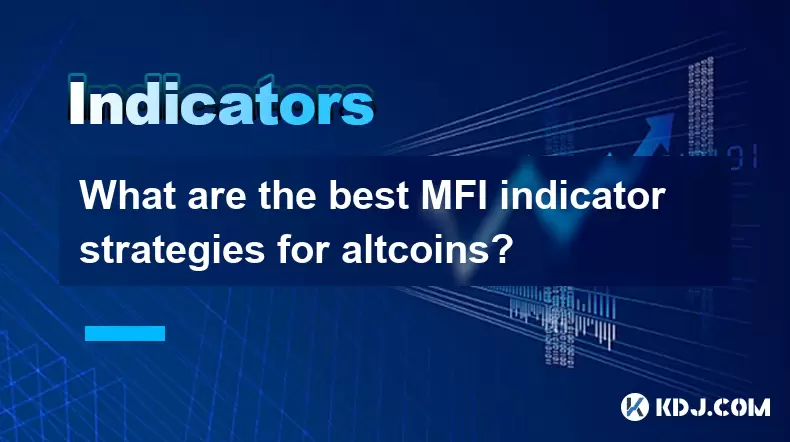
What are the best MFI indicator strategies for altcoins?
Aug 01,2025 at 08:01am
Understanding the MFI Indicator in Altcoin TradingThe Money Flow Index (MFI) is a momentum oscillator that measures the flow of money into or out of a...
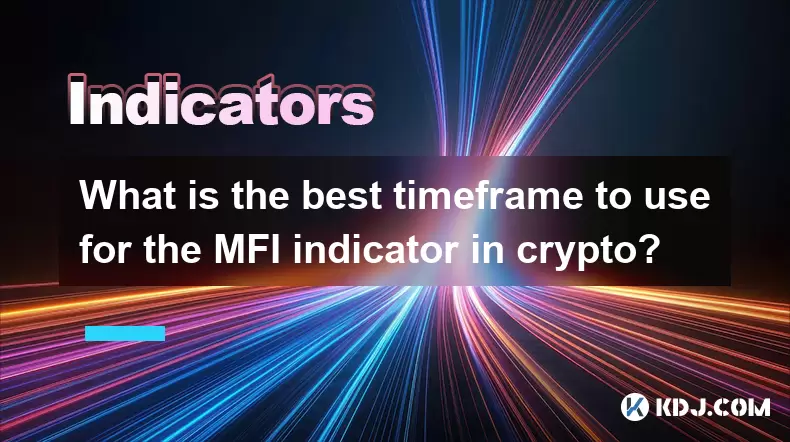
What is the best timeframe to use for the MFI indicator in crypto?
Aug 01,2025 at 09:02am
Understanding the MFI Indicator in Cryptocurrency TradingThe Money Flow Index (MFI) is a momentum oscillator that measures the flow of money into and ...
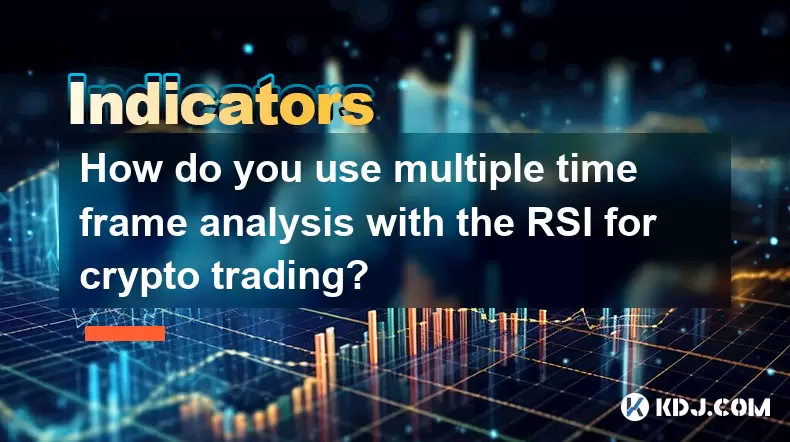
How do you use multiple time frame analysis with the RSI for crypto trading?
Aug 01,2025 at 05:19am
Understanding the Role of RSI in Crypto TradingThe Relative Strength Index (RSI) is a momentum oscillator that measures the speed and change of price ...
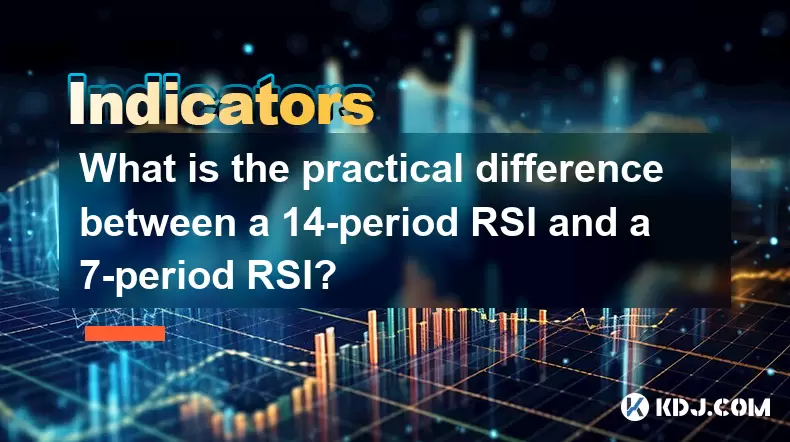
What is the practical difference between a 14-period RSI and a 7-period RSI?
Aug 01,2025 at 07:01am
Understanding the Relative Strength Index (RSI)The Relative Strength Index (RSI) is a momentum oscillator widely used in cryptocurrency trading to mea...
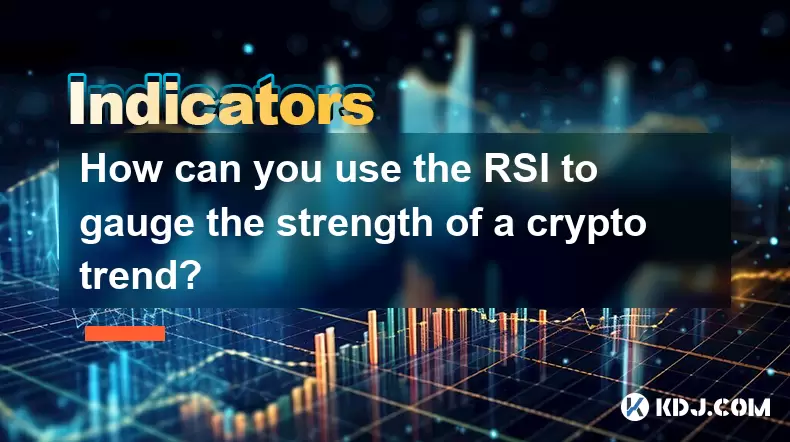
How can you use the RSI to gauge the strength of a crypto trend?
Aug 01,2025 at 08:35am
Understanding the RSI and Its Role in Crypto AnalysisThe Relative Strength Index (RSI) is a momentum oscillator that measures the speed and change of ...
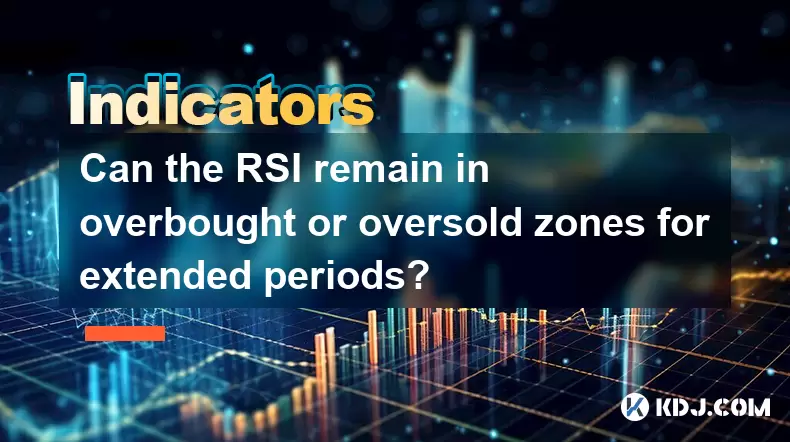
Can the RSI remain in overbought or oversold zones for extended periods?
Aug 01,2025 at 07:10am
Understanding the RSI and Its Standard InterpretationThe Relative Strength Index (RSI) is a momentum oscillator that measures the speed and change of ...

What are the best MFI indicator strategies for altcoins?
Aug 01,2025 at 08:01am
Understanding the MFI Indicator in Altcoin TradingThe Money Flow Index (MFI) is a momentum oscillator that measures the flow of money into or out of a...

What is the best timeframe to use for the MFI indicator in crypto?
Aug 01,2025 at 09:02am
Understanding the MFI Indicator in Cryptocurrency TradingThe Money Flow Index (MFI) is a momentum oscillator that measures the flow of money into and ...

How do you use multiple time frame analysis with the RSI for crypto trading?
Aug 01,2025 at 05:19am
Understanding the Role of RSI in Crypto TradingThe Relative Strength Index (RSI) is a momentum oscillator that measures the speed and change of price ...

What is the practical difference between a 14-period RSI and a 7-period RSI?
Aug 01,2025 at 07:01am
Understanding the Relative Strength Index (RSI)The Relative Strength Index (RSI) is a momentum oscillator widely used in cryptocurrency trading to mea...

How can you use the RSI to gauge the strength of a crypto trend?
Aug 01,2025 at 08:35am
Understanding the RSI and Its Role in Crypto AnalysisThe Relative Strength Index (RSI) is a momentum oscillator that measures the speed and change of ...

Can the RSI remain in overbought or oversold zones for extended periods?
Aug 01,2025 at 07:10am
Understanding the RSI and Its Standard InterpretationThe Relative Strength Index (RSI) is a momentum oscillator that measures the speed and change of ...
See all articles

























































































